Was Zeigenössisches und binnen einer Woche auf der Basis eines kleinen Pixelprofils eines Whif-Kollegen entstanden. Das hier war der Startpunkt:

Verlinkt von:
http://www.whatifmodelers.com/index.php/topic,36775.msg711529/boardseen.html#new...und das hier kam dann bei mir heraus:
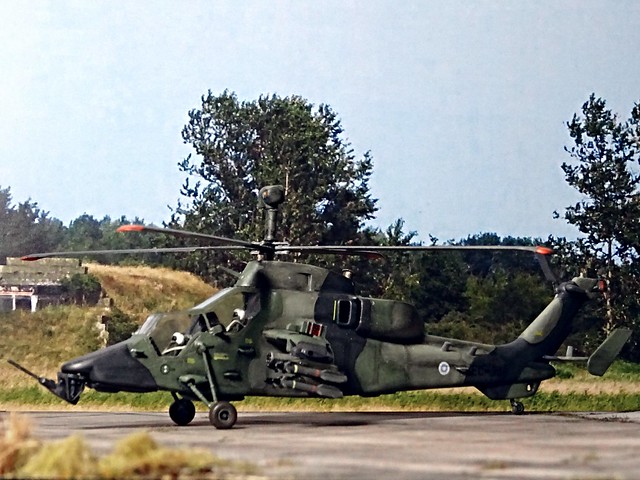
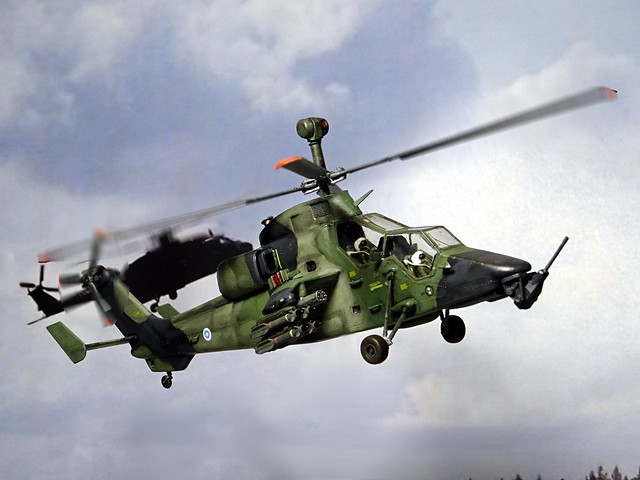

Some background:Airbus Helicopters Tiger, formerly known as the Eurocopter Tiger, is a four-bladed, twin-engined attack helicopter which first entered service in 2003. It is manufactured by Eurocopter (now Airbus Helicopters), the successor company to Aérospatiale's and DASA's respective helicopter divisions, which designate it as the EC665. In Germany and Australia it is known as the 'Tiger'; in France and Spain it is called the 'Tigre'. Finland, the youngest export customer, calls the EC665 'Tiikeri'.
Development of the Tiger started during the Cold War and it was initially intended as an anti-tank helicopter platform to be used against a Soviet ground invasion of Western Europe. During its prolonged development period the Soviet Union collapsed, but France and Germany chose to proceed with the Tiger, developing it instead as a multirole attack helicopter.
It achieved operational readiness in 2008 and since the type's introduction to service, Tigers have been used in combat in Afghanistan, Libya, and Mali.
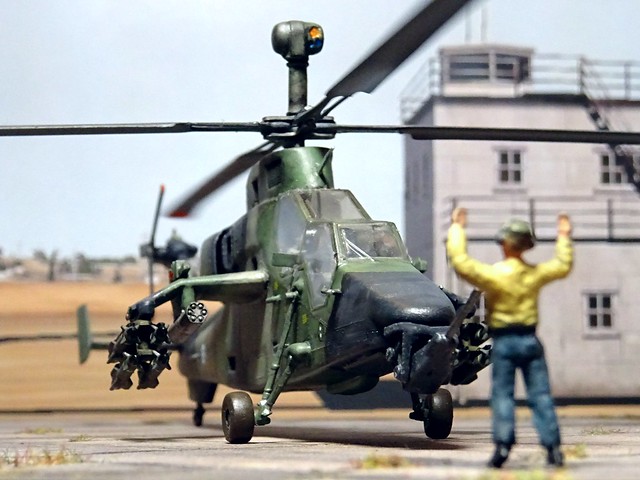
The Tiger has the distinction of being the first all-composite helicopter developed in Europe. Even the earliest models also incorporate other advanced features such as a glass cockpit, stealth technology and high agility to increase its survivability. The Tiger has a tandem-seat cockpit and is operated by a two-man crew; the pilot is placed in the forward position, with the gunner seated behind.
Either of the crew members can manage the weapon systems or the primary flight controls, switching roles if necessitated.
In addition to flying the aircraft, the Tiger's pilot would typically be in control of the self-defense systems and communications, as well as some secondary weapon functions.
Amongst the Tiger's notable qualities, it possesses very high levels of agility, much of which is attributed to the design of its 13-meter four-bladed hinge-less main rotor; the Tiger can perform full loops and negative g manoeuvres. Power is provided by a pair of FADEC-controlled MTU Turbomeca Rolls-Royce MTR390 turboshaft engines.
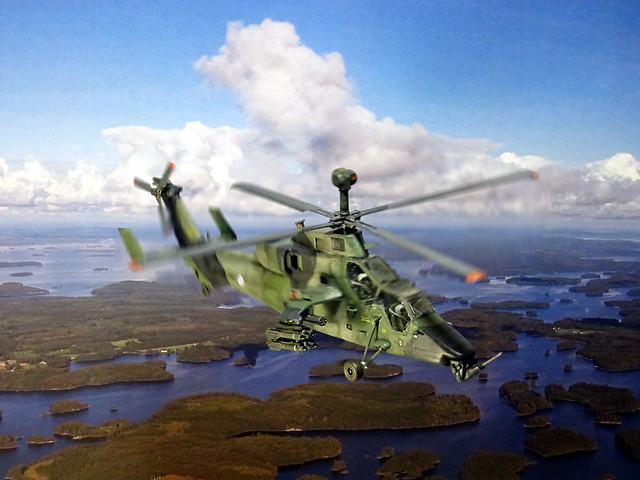
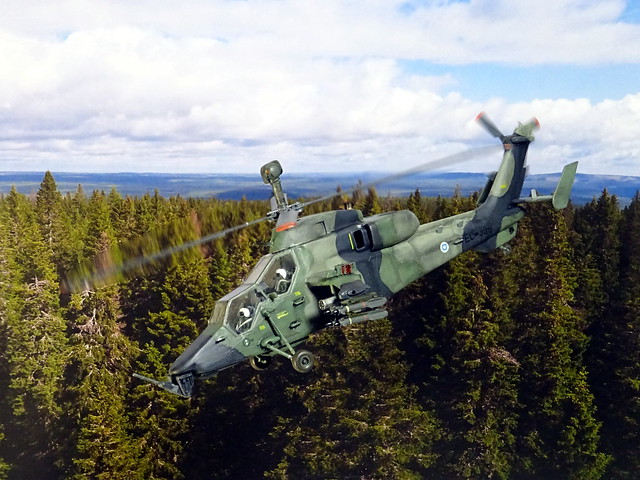
Finland is only a small operator of the helicopter. The type’s procurement for the country’s army came as a surprise, even though it is part of the thorough modernization program of the Finnish Army and its equipment.
This modernization program started in October 2001 when Finland signed a contract for 20 NH90 TTHs for the Finnish Army to replace their ageing fleet of Mil Mi-8 helicopters from 2004 onwards.
NH 90 deliveries became delayed, though, and in the meantime the tactical potential of an additional, dedicated combat helicopter was assessed and positively evaluated. One of the major factors that led to the Tiger’s purchase was the fact that Finland participated in nearly all sub-areas of NATO’s Partnership for Peace program and had for example provided peacekeeping forces to both the Afghanistan and Kosovo missions. The possibility of Finland's membership in NATO was one of the most important political issues and continues to be a prominent issue in Finnish politics.
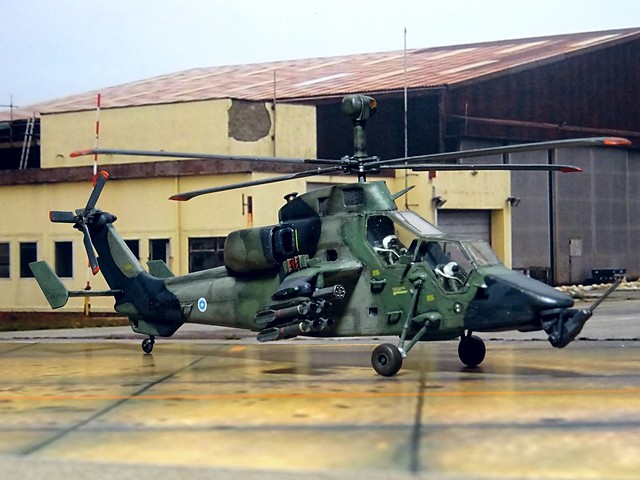
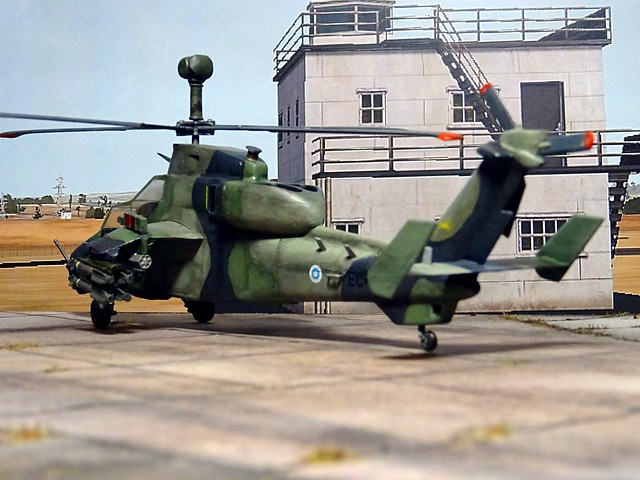
Within the Finnish Army the EC665 is regarded as an armed complement to the new NH90 transport helicopters. An initial order for eight EC-665s was placed in 2004, including an option for eight more, at estimated costs of €27m/unit.
The Finnish variant was optimized for the anti-tank and fire support role, but also capable of armed reconnaissance and artillery spotting. Its avionics and sensor suite was not as sophisticated as other nations’ variants, but still built around existing state-of-the-art equipment and tailored to the Finnish needs.
Amongst the key avionics features of the helicopter are the EUROGRID battlefield management and map display systems, integrated communications (HF/VHM/FM radio and satellite) and data transfer links, a high-authority digital automatic flight control system, and redundant MIL 1553 data buses. Two redundant mission computers control the weapons, sensors, and targeting functions. The Tiger's navigational suite includes GPS, dual-redundant inertial referencing, Doppler radar, separated air data units, radio altimeter and distributed air speed sensors.
The most significant single avionics system fitted upon the Finnish Tiger is the mast-mounted OSIRIS sight/sensor. This incorporates optical TV and thermal cameras, a laser range finder/tracker/designator, and multiple gyroscopes for stabilization. OSIRIS performs as the main sensor for target observation and acquisition, providing firing and targeting data via the weapons computer. Furthermore, OSIRIS also enables entirely passive target acquisition to be undertaken, greatly reducing the risk of enemy detection.
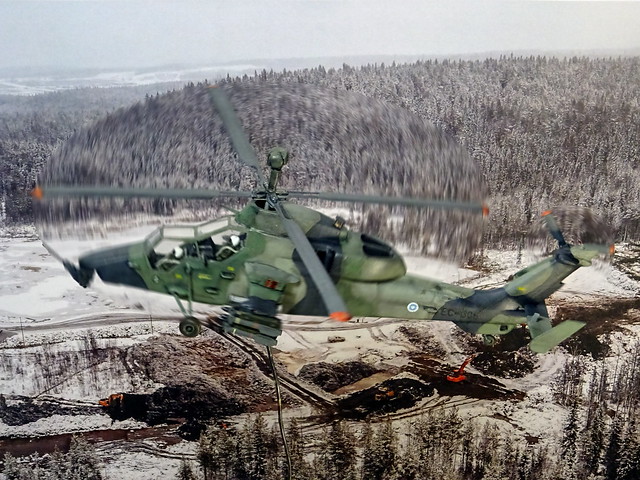
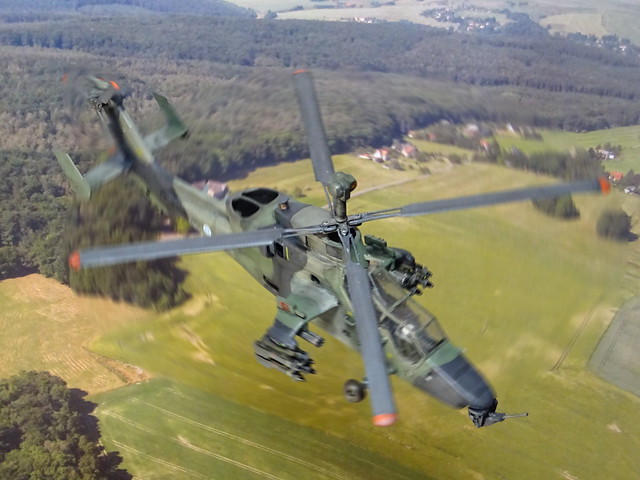
Each crew member has a pair of multifunction liquid-crystal data displays at their control station, typically used to display internal systems information and sensory data, and to interact with the aircraft's higher systems. An additional display system is available to both crew in the form of the helmet-mounted display (HMD). The HMD is used by the flying pilot to display basic flight data with digitally enhanced optics, such as night vision or infrared imagery from the sensors, superimposed against; the gunner can use the HMD to interact with and control on-board weapon systems and view targeting data.
The 'Tiikeri' can operate during day or night in all-weather conditions, and has been designed to include operations in the aftermath of nuclear, biological, or chemical warfare. It can even be used in the maritime environment, able to operate from the decks of ships including frigates and during extreme weather conditions.
The Tiger is capable of equipping various armaments including rockets, cannon, and a range of air-to-air and air-to-surface missiles, controlled via a dedicated weapons control computer. The Finnish variant’s main armament is the AGM-114 ‘Hellfire’ missile, up to sixteen of these weapons can be carried. Other munitions for anti-ground warfare include an assortment of external gun pods and up to four launchers for 70mm and 68mm rockets, all to be mounted under the Tiger's stub-wings. A nose-mounted Nexter turret with a GIAT 30 mm gun is also available.
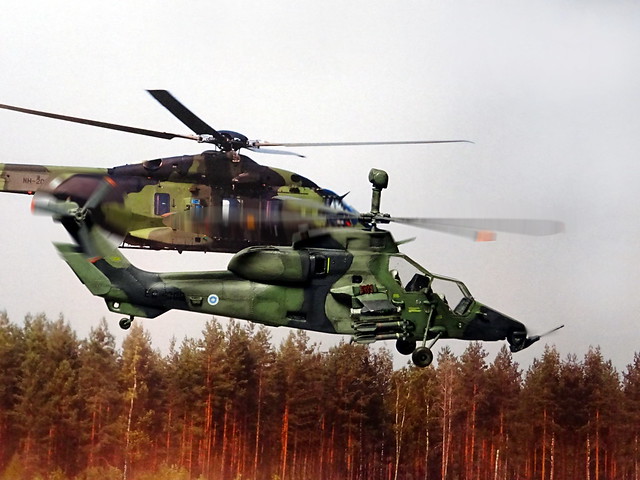
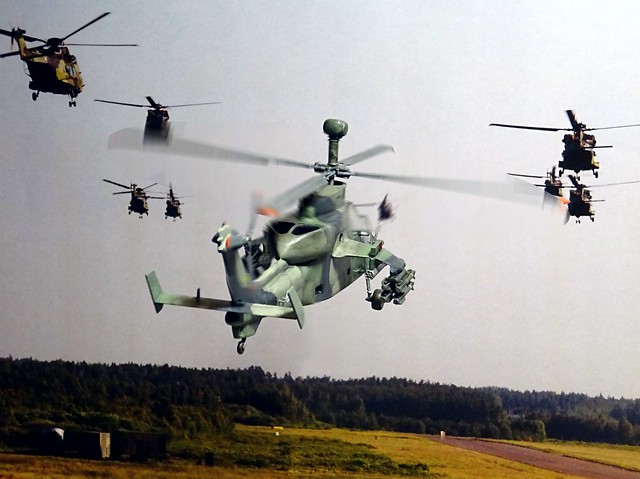
In March 2008, EC665 deliveries began, together with the delayed NH90s. To minimize further delay, aircraft were first delivered to an Initial Operational Configuration (IOC-) and Nearly Operational Configuration (IOC+), to be later modified by Patria into a Final Operational Configuration (FOC). In parallel, initial pilot training and conversion had been conducted at the Franco-German pilot training school at Le Luc in Provence. Operational status of the first batch was achieved in early 2009, and delivery of the second batch started in 2010.
In June 2011, six Finnish EC665 participated in the Finnish Defense Forces' main field exercise, escorting NH90 troop transports; their performance was described as having exceeded expectations.
General characteristics: Crew: Two (pilot and weapon systems officer)
Length: 14.08 m fuselage (46 ft 2 in)
Rotor diameter: 13.00 m (42 ft 8 in)
Height: 3.83 m (12 ft 7 in)
Disc area: 133 m² (1,430 ft²)
Internal fuel capacity: 1,080 kg (2,380 lb)
Empty weight: 3,060 kg (6,750 lb)
Loaded weight: 5,090 kg (11,311 lb)
Max. takeoff weight: 6,000 kg (13,000 lb)
Powerplant: 2× MTU Turbomeca Rolls-Royce MTR390 turboshafts, 958 kW (1.303 shp) each
Performance: Maximum speed: 290 km/h (157 knots, 181 mph)
Range: 800 km (430 nm, 500 mi) in combat configuration
1,300km with external tanks in the inboard stations
Service ceiling: 4,000 m (13,000 ft)
Rate of climb: 10.7 m/s (2,105 ft/min)
Power/mass: 0.23 hp/lb (0.38 kW/kg)
Armament: 1× 30 mm (1.18 in) GIAT 30 cannon in chin turret, with up to 450 rounds.
Four stub wing hardpoints for e.g. 20 mm (0.787 in) autocannon pods, 68 mm (2.68 in) SNEB or
70 mm (2.75 in) Hydra 70 unguided rockets pods or starters with 4x AGM-114 Hellfire missiles
Die Basis ist der Italeri-Tiger, der entsprechend dem Profil umgebaut wurde (u.a. mit der franz. Kanone). Es wurden allerdings auch einige Kleinigkeiten verändert: So stammen die Hellfire von einer AH-64, die Raketenbehälter von einer Revell G.91. Im Cockpit sind Piloten-Pygmäen hinzugekommen, plus ein paar andere Antennen und ein Adapter für einen Drahtständer für die Bilder.
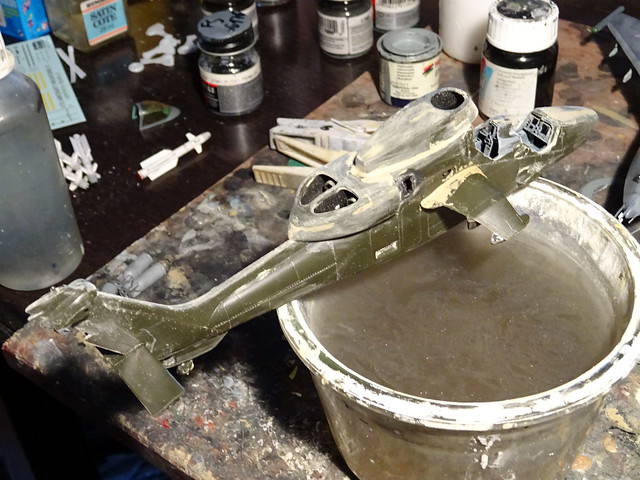
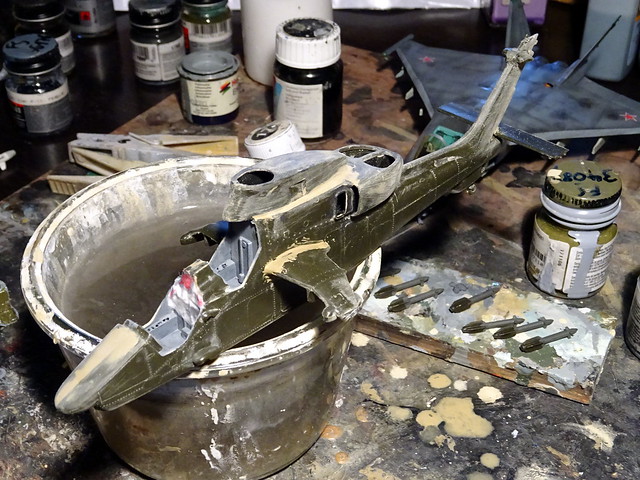
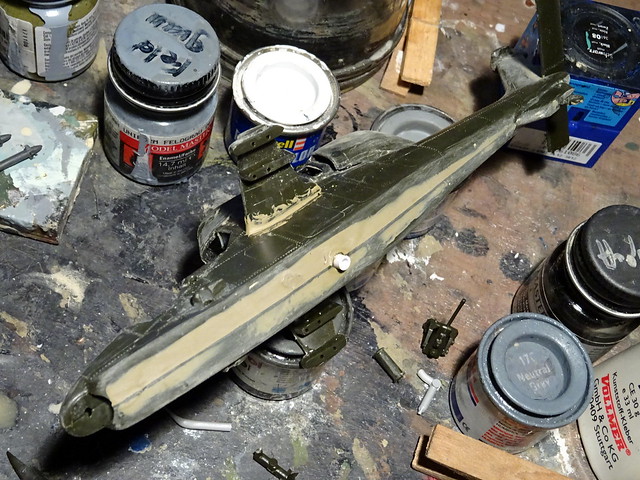
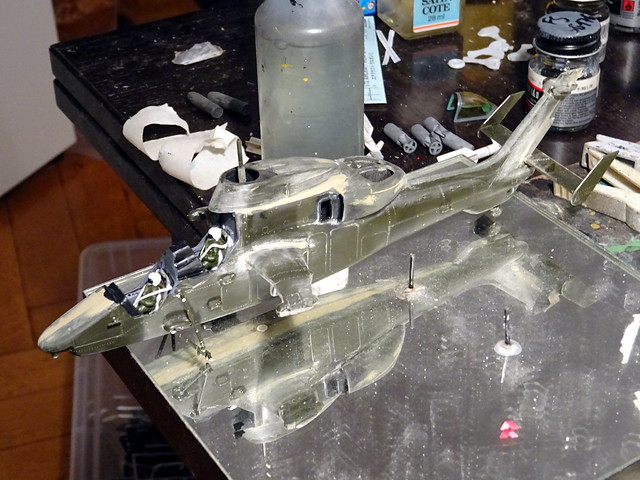
Die Bemalung war trickig, denn das Profil ist (wie alle Bildschirm- oder Print-Farben) schwer zu interpretieren. Es könnten die Bundeswehr-Farben sein (die finnische Armee betribt ihre NH90 tatsächlich im deutschen Heeres-Anstrich!), aber dazu passt das Schem nicht - das basiert auf dem französischen Anstrich. Dann gibt es noch Farben, die beim finnischen Heer auf Bodenfahrzeugen benutzt werden, auch zwei Grün- und ein Schwarzton, darauf allerdings in einem Splintermuster.
Meine Lösung ist ein Mix aus den finnischen Heeresfarben mit dem franz. Schema, analog dem Profil. "Meine" Töne sind Revell 45 (RAL 7003 ‘Moosgrau’), FS 34096 (sehr nah am finnischen- WWII-Oliv) und RAL 7021, ein sehr dunkles Grau.

Interieur und Rotoren sind Neutral Grey (FS 36173), Letztere mit orangefarbenen Spitzen.
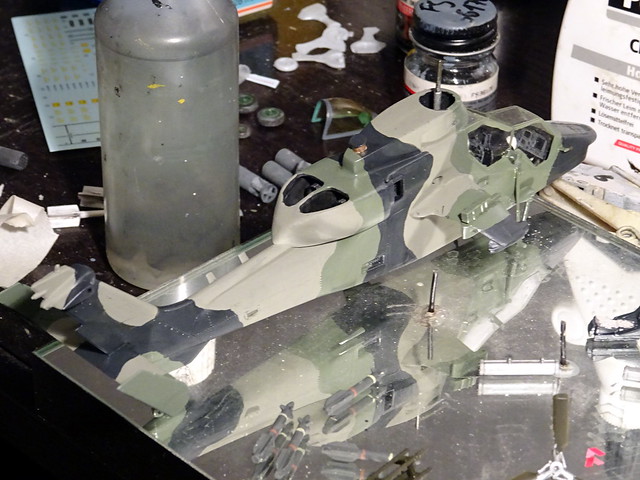

Die Grundfarben wurden per Pinsel aufgehellt, u.a. mit RLM 02 und FS 37066 von ModelMaster sowie Humbrol 105. Markierungen sind zusammenstoppelt, die finnischen Kokarden sind eigentlich 1:144 und der Code wurde aus einzelnen Buchstaben zusammengsetzt.
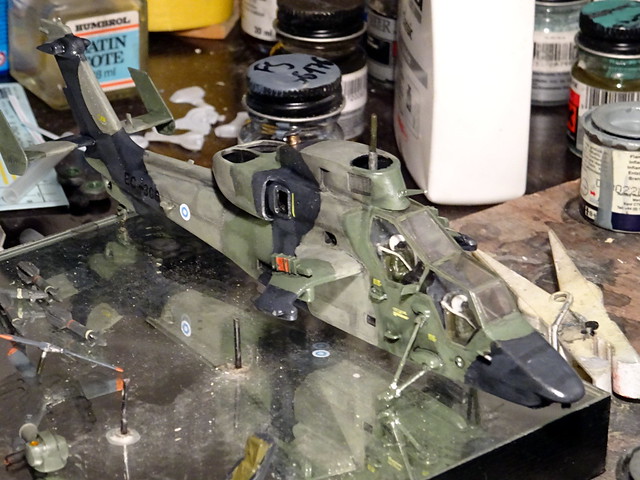
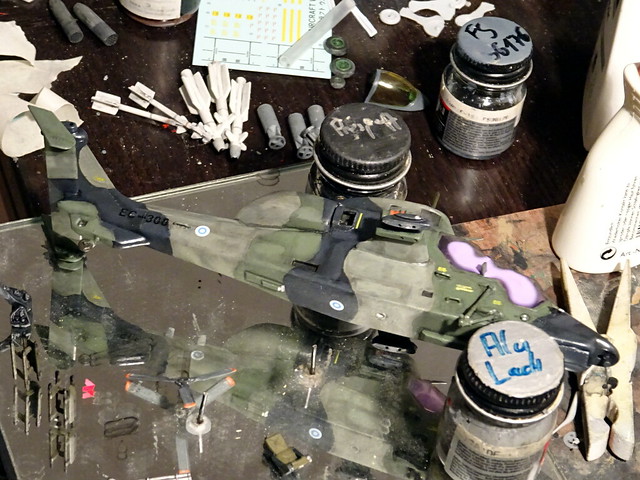
Zum Schluss gab es etwas Dreck in Form abgeriebenen Graphits umj die Triebwerke herum, sowie eine Lage Acrly-Mattlack aus der Dose

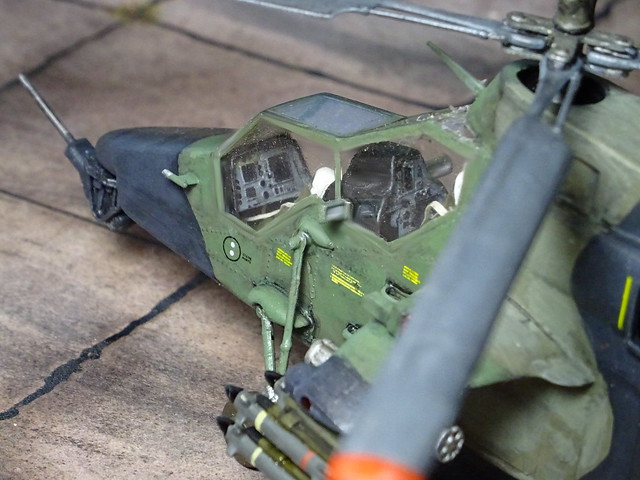


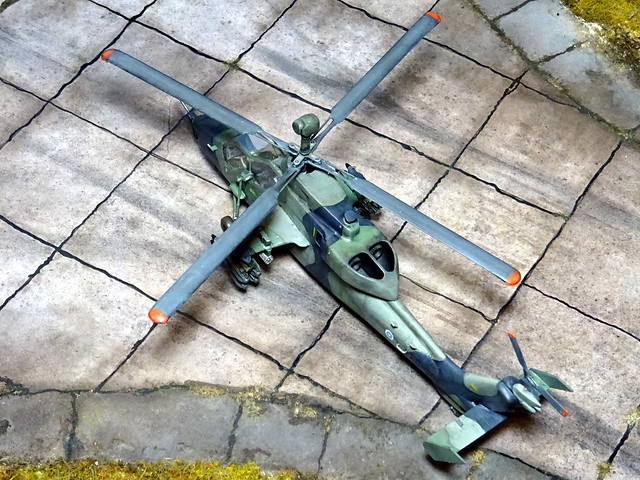
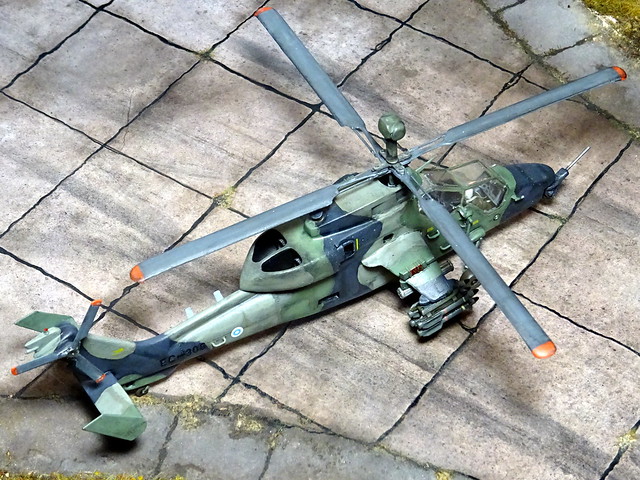
Ein subtiles Whif-Modell, aber der "finnsiche Touch" kommt ganz gut herüber, und das Ding wirkt durchaus plausibel.
